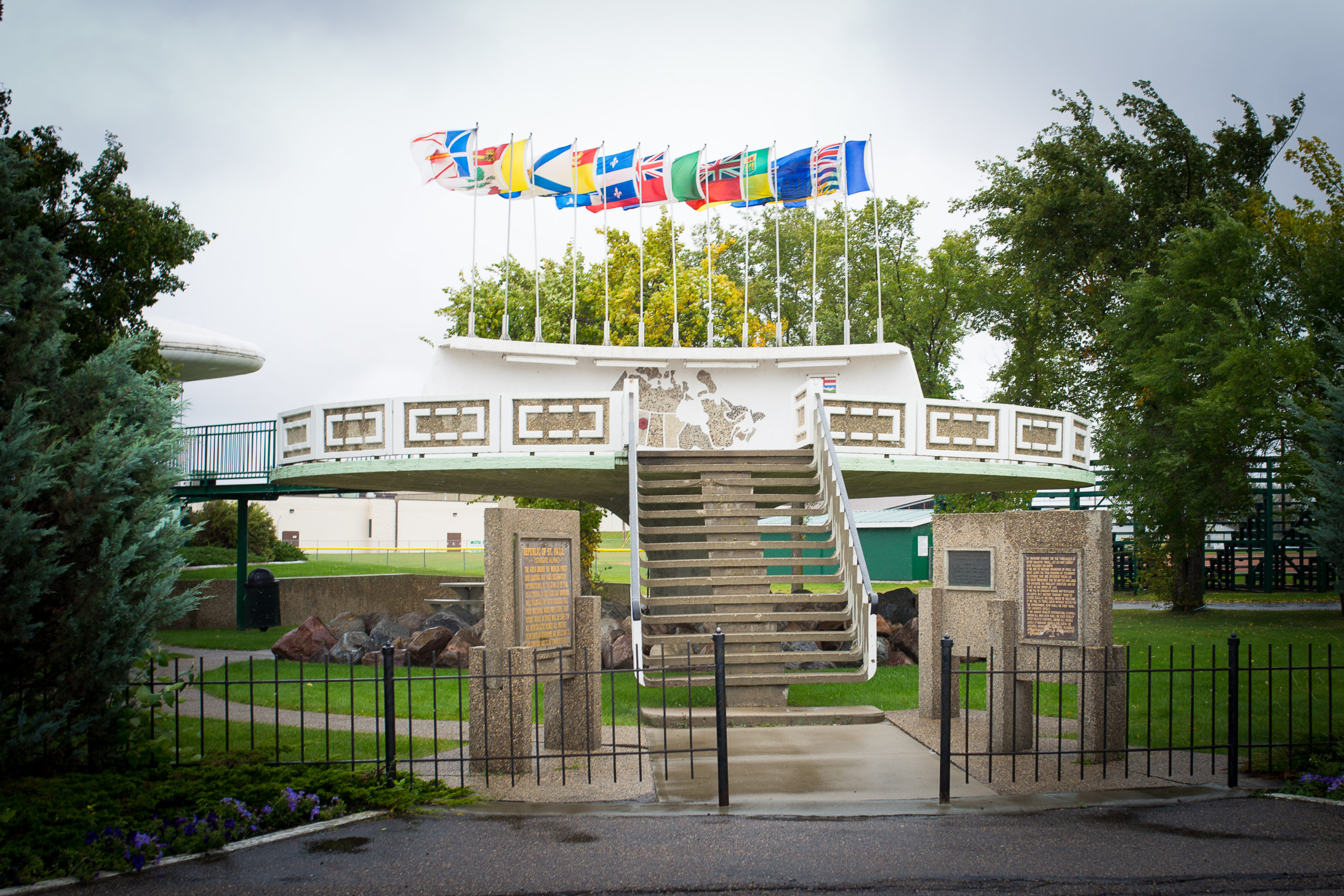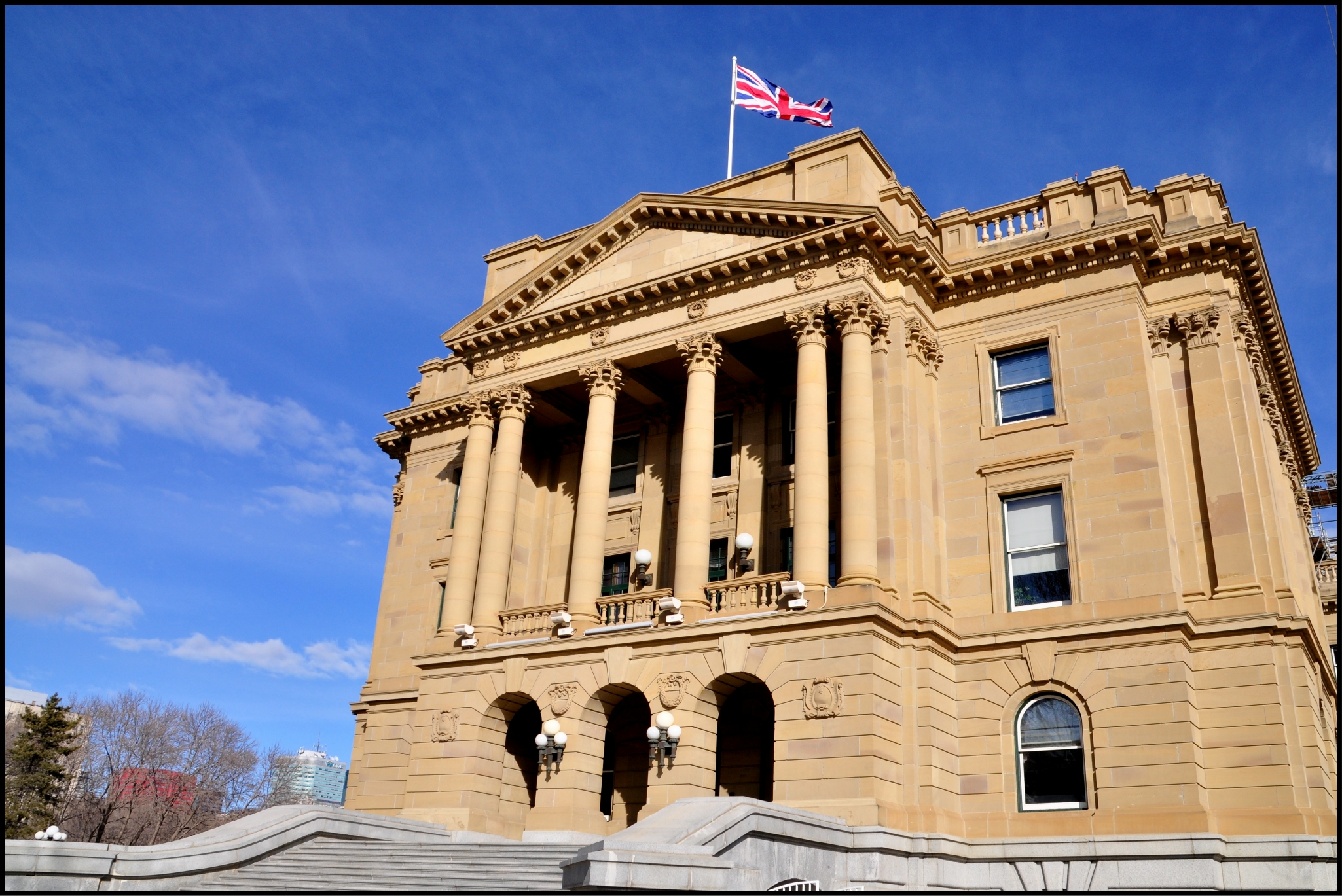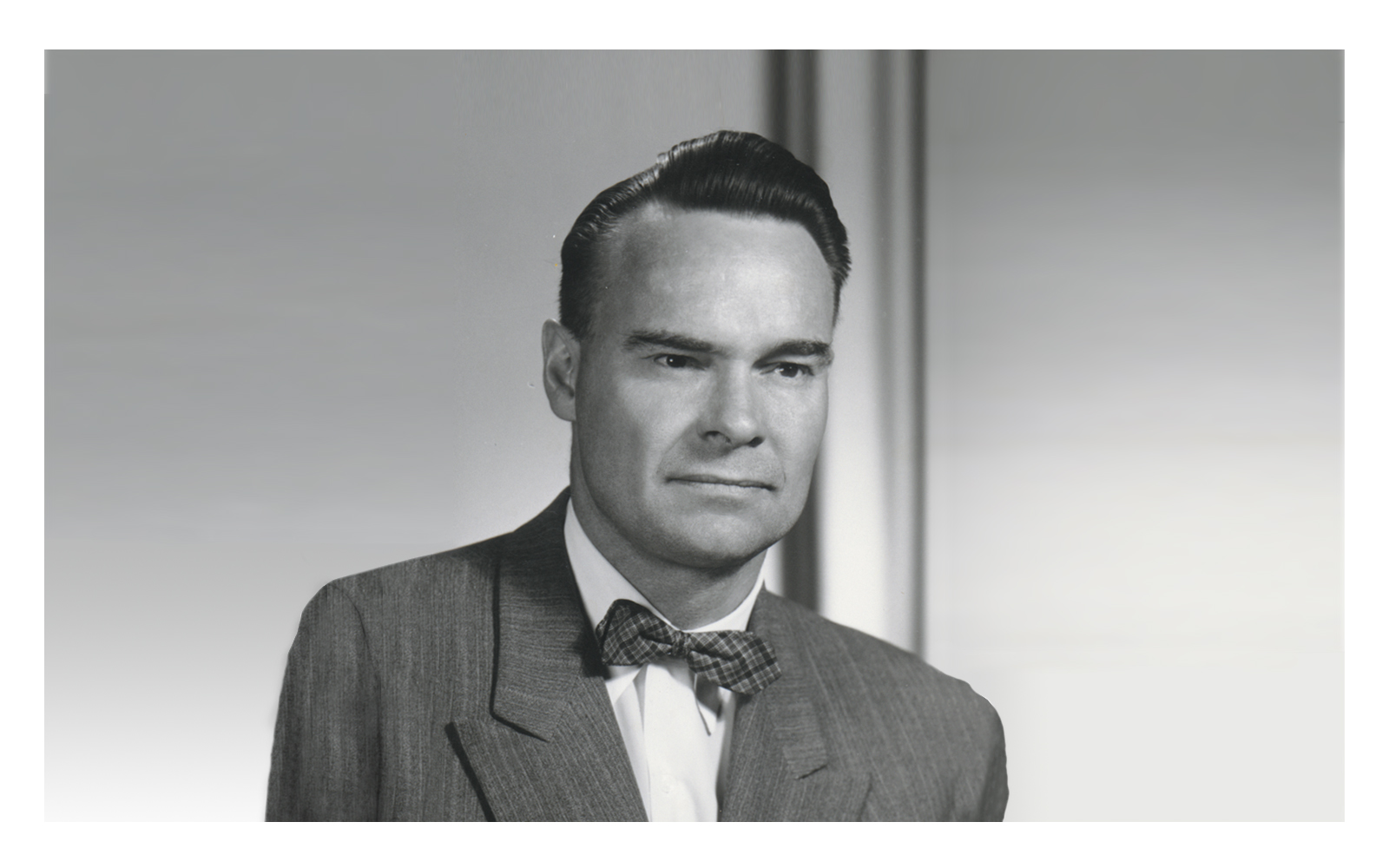Glenbow Archives NA-5103-2
Black Gold! Leduc No. 1 Oil Strike Makes History
Where was the oil? That was the multi-million-dollar question on the mind of Ted Link, Imperial Oil’s chief geologist.
It was 1946. After spending millions drilling 133 dry holes across Western Canada, Imperial had decided to push forward with a last–ditch effort to find black gold.
Link, who oversaw exploration, polled Imperial’s 30 or so staff geologists and geophysicists, asking them where the company should drill hole number 134.
The consensus: central Alberta.
Using aerial photos and seismic test data, the location was narrowed down to a farmer’s field about 40 kilometres southwest of Edmonton near the town of Leduc. Tests showed an anomaly—a small rise in the Cretaceous rock formation, which indicated oil might be trapped below.
Drilling of Leduc No. 1 started in November 1946 and continued into the new year. In January, when the well reached a depth of 1,536 metres, well site geologist Steve Cosburn made a discovery—clear yellowish liquid in the limestone samples.
Jackpot!
“I was the first man to see that live oil,” Cosburn told a reporter in 1997 on the 50th anniversary of the discovery. “We’d been hunting so long. It was sure gratifying.”
On February 13, 1947, nearly 500 dignitaries, onlookers, and reporters braved the frigid cold to witness Leduc No. 1 roar into production.
Newspaper headlines heralded the discovery, but an article in Imperial’s company magazine struck a cautious tone. The magazine, called the Imperial Oil Review, pointed out that the well had yet to prove itself. The discovery didn’t even make the cover.
“Petroleum and production engineers believed that in its initial stages the well gave the most encouraging wildcat performance Canada has seen since the discovery of the Turner Valley field,” Imperial’s story noted. “Geologists and their partners in the search for oil-bearing structures, the geophysicists, were enthusiastic about the story revealed by the rock cores brought up from the producing horizons…The Leduc well has provided promise to repay some of this investment of money and heartbreaks in wildcatting.”
That it did. But the discovery was just the beginning.
A few months later and only a few kilometres away, Imperial’s Leduc No. 2 struck another gusher. This one, slightly deeper at 1,637 metres, proved for the first time that oil-bearing Devonian reefs existed in Western Canada. Most geologists of the day believed oil was most likely to be found in the shallower Cretaceous rock.
Backed by more and more investment, fervent exploration and new discoveries followed.
Imperial found another major Devonian field in 1948, about 60 kilometres northeast of Edmonton near the hamlet of Redwater. Within five years, it was producing almost 30 per cent of Alberta’s oil.
Even Bigger: The Pembina Field
The biggest was yet to come. In 1953, Seaboard Oil and the Socony-Vacuum Exploration Company—later to become ExxonMobil—joined forces to drill an exploratory well near Drayton Valley by the Pembina River. Initial tests just missed the Cardium formation that geologist Arne Nielsen and his three-man team were targeting.
Nielsen convinced his bosses to spend another $30,000 for further investigation. He had a sample jar from the first drill stem test sitting on his desk and had noticed oil separating from the mud. “So we were convinced that there was more here than there appeared to be,” Nielsen said in a 1984 interview for the Petroleum Industry Oral History Project.
Indeed. What they had discovered would prove to be the largest and most productive conventional oilfield in Canada. But the frenzy was yet to come.
“People still didn’t realize what we had—industry didn’t. They thought it was just another small one– or two-off Cretaceous field,” recalled Nielsen.
By 1956, producing oil wells in Alberta numbered 7,400—up from a mere 523 in 1946. Over the same period, annual oil production grew to 144 million barrels from 6.7 million barrels.
Oil replaced coal as Canada’s largest source of energy. The nation rushed to build oil refineries and pipelines. Royalties flowed into the province’s coffers.
Canada’s modern oil industry had arrived.
Geologist Arne Nielsen, who helped discover the Pembina oilfield, in his office at the Socony-Vacuum Exploration Company in 1953. He encouraged his bosses to continue exploration in the Drayton Valley area after noticing oil separating from mud in a sample sitting on his desk.
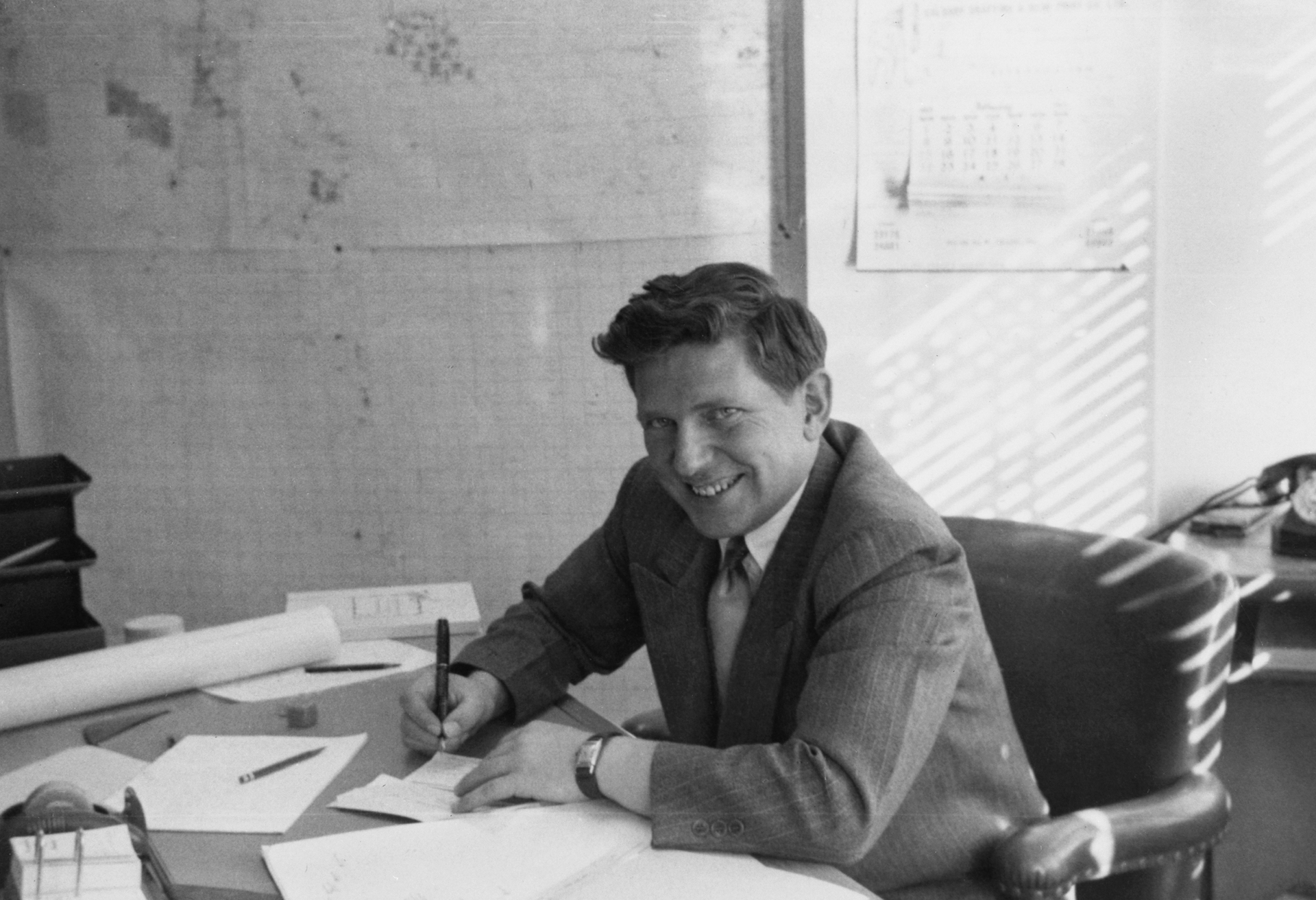
Glenbow Archives NA-5103-2
Crowds brave the cold to witness the blowing in of Leduc No. 1 on February 13, 1947.
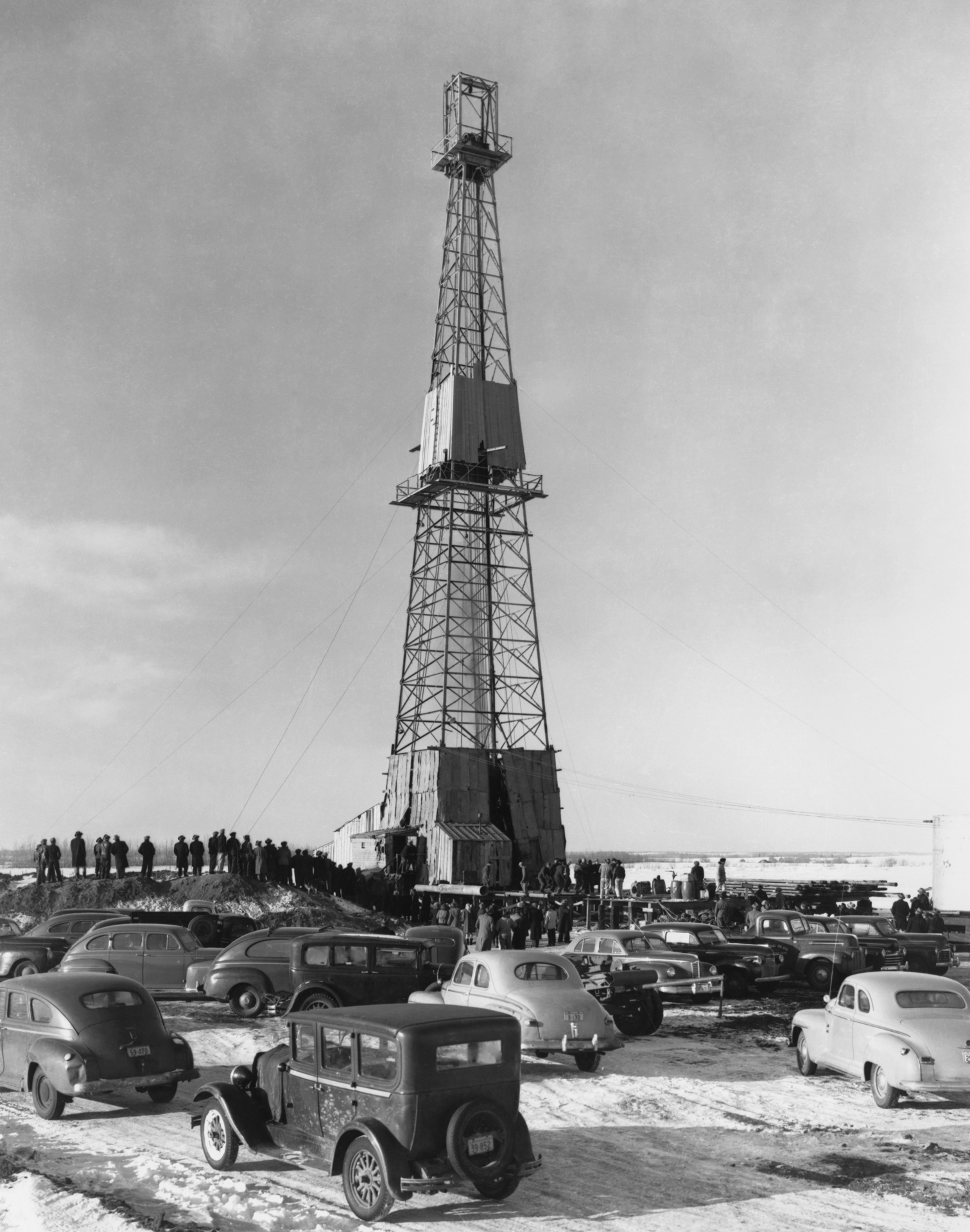
Glenbow Archives IP-6f-18os
“Farmer and oil man. Grain and crude oil. Two crops where there was one. It’s strange and wonderful, this reaping of another harvest, rich and powerful, a mile below the wheat.”
